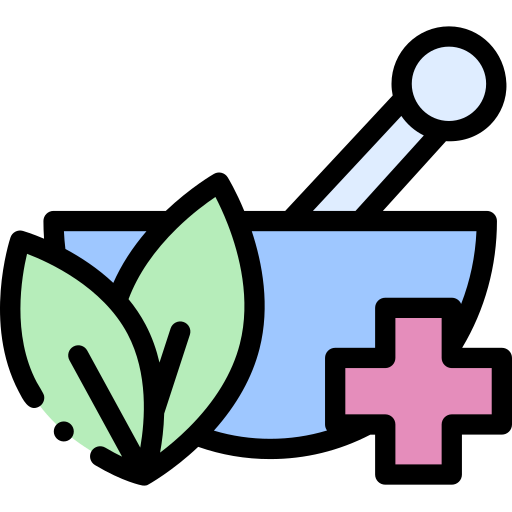Trending






Science Differences FAQs
This post lists the Science Differences FAQs (Frequently Asked Questions and answers) also a collection of many Science Differences FAQs.
A cell is the smallest unit of life. It forms a structural and functional unit of all living organisms like animals, bacteria and humans. An adult human body is roughly made up of trillions of cells that are responsible for absorbing nutrients from our body and converting them into energy.
A cell contains various cell organelles that are responsible for carrying out different life functions.
The word cell is originated from a Latin word that means “small room”. As cells can replicate themselves independently, that is why they are called basic building blocks of life.
All organisms are either single cellular (which means made up of single cell) or multicellular (made up of many cells). Cells are of different shapes and sizes.
Based on structure, cells are of two types
- Prokaryotic -which does not contain a nucleus
- Eukaryotic- which contains a nucleus
Now let's understand the difference between a bacterial cell and an animal cell
Bacterial Cell-
It is prokaryotic and unicellular which means all functions like feeding, digestion and reproduction happen inside one cell. It does not have a membrane-bound nucleus, and components like mitochondria, lysosomes, ribosomes and other special structures. As it does not have a well-defined nucleus, its nucleus is known as a nucleoid.
Animal cell-
Animal cells on other hand are Eukaryotic and have a well-defined nucleus that is bound by a membrane. They also have cytoplasm which is surrounded by a plasma membrane and other cell organelles which performs various functions necessary for the functioning of the cell.
So the key difference between Bacterial cell and Animal Cell can be summarized below as-
|
BACTERIAL CELL |
ANIMAL CELL |
|
Does not contain a well-defined nucleus. |
Contains a well-defined membrane-bound nucleus. |
|
Cell organelles are not found. |
cell organelles found inside the cytoplasm. |
|
The size is very small as compared to animal cells. |
it is larger than a bacterial cell. |
|
The well-defined cell wall is present. |
the cell wall is absent. |
|
They are mostly autotrophs and a few are heterotrophs. |
They are heterotrophs.
|
|
Contains plasmids. |
Does not contain plasmids.
|
|
Contains a single chromosome. |
Contains many chromosomes.
|
|
Cell shape is well defined. |
irregular cell shape. |
Our Human Skeleton system is made up of bones and cartilages which gives a framework to our body. The bone cells are called osteocytes and cartilage cells are called chondrocytes. Apart from this they both are also made up of collagen.
The main function of bones and cartilage is to protect the internal organs, tissues and also help in the movement of various body parts.on average a human body has 206 bones.
Let us now see the key differences between Bone and cartilage:
What is Bone?
Bones are of different shapes and sizes and their main function is to provide shape to the human body and help in the movement of the body.
Bone cells are of three types:
- Osteoblast-These are progenitor cells
- Osteocytes-These are mature bone cells
- Osteoclasts-Plays role in maintenance and repair of the vertebral skeleton
The outer part of the bone is dense and compact and the inner part is a spongy honeycomb-like structure.
What is Cartilage?
It is a living connective tissue that is found in different forms in our body. It is softer than bone and more flexible. It is mainly found in the ear, nose and also as a cushion at the ending of joints to protect them from rubbing against each other.
Cartilages are of 3 types:
- The elastic cartilage-maintains shape of flexible body parts like ears, nose
- Fibrocartilage-It acts as a cushion in knee joints, hip and shoulder joints.
- Hyaline Cartilage-consists mainly of collagen fibres and protects joints where frequent movement takes place.
Bone Vs Cartilage
|
Bone |
Cartilage |
|
It is hard and rigid in nature |
It is smooth and flexible |
|
It gives a structural framework and assists in body movement |
Helps in reducing friction in joints |
|
According to structure, it can be short, long, flat irregular, sesamoid, sutural bones |
It is of three types hyaline, elastic, fibrocartilage |
|
There are three types of bone cells Osteoblast, osteocytes and osteoclasts |
Cartilage cells are of three types chondroblasts, chondrocytes and collagen fibres |
|
Periosteum forms the outer covering |
Perichondrium forms the outer covering |
|
The growth pattern is bidirectional |
The growth pattern is unidirectional |
Both Abiotic and biotic components together form the Ecosystem. All non-living components like air, water, sunlight wind, water are called Abiotic components, on the other hand living things in ecosystems like plants, animals, algae fungi are called Biotic components.
Abiotic Components-
Abiotic factors have three broad categories-
- Climatic-Factors like sunlight, humidity, wind temperature are included in this category.
- Edaphic –factors like soil characteristics and topography of land are included in this category.
- Social –Factors included are mining, farming, afforestation, deforestation.
- building dams etc.
Biotic Factors-It has three broad categories
- Autotrophs -also known as food producers, prepare their own food through photosynthesis. These include water and land plants.
- Heterotrophs-They cannot prepare their own food and is dependent on autotrophs or heterotrophs for food. These include humans, animals, fungi bacteria etc.
- Detritivores-The organisms in these groups feed on dead and decaying plants and animals. They are also called decomposers.
Let us now illustrate the differences-
|
Abiotic |
Biotic |
|
These are the non-living components in the ecosystem. |
These are living components of the ecosystem. |
|
They are independent and have no dependency on other components for survival. |
They have a dependency on abiotic components for survival. |
|
Not able to adapt to changes. |
Capable of adapting to changes. |
|
They have 3 categories climatic, edaphic social. |
They are categorized as producers, consumers and decomposers. |
|
We can do the objective measurement of abiotic factors |
We can do the subjective measurement of biotic factors. |
|
Water, oil, land coal etc are abiotic resources. |
Birds, Animal forests, marine resources are biotic resources. |
Absorption-
Absorption is a physical or chemical process in which atoms, ions and molecules from one substance enters into another solid or liquid substance. Absorbate is the substance that gets absorbed and absorbent is the substance that absorbs.
Absorption can be physical or chemical
- Chemical Absorption-In this a chemical reaction takes place between absorbent and absorbate during absorption
- Physical Absorption-This on the other hand is a non-reactive process that happens between two states of matter for eg liquid absorbing a gas(oxygen in the air getting absorbed by water)atmosphere or solid absorbing a liquid (clay pot absorbing some of the water stored in it.
Adsorption-It is a phenomenon of adhesion of the molecules of a substance by liquid or solid surface. The surface where it happens is called the interface. Zeolites (removes carbon dioxides from natural gas), activated carbon(removes impurities from water), silica gel(protects electronics and clothing by adsorbing moisture) are examples of commonly used adsorbents.
It is also of two types-
- Physical-In this weak van der Waals forces exist between the two components.
- Chemical-In these covalent bonds are formed between the two components.
Let us now understand some of the differences
|
Absorption |
Adsorption |
|
It means a substance diffusing into another (liquid or solid). |
Gas or liquid molecules bind into solid or liquid surfaces. |
|
It is a bulk event. |
It is a surface event. |
|
Absorbate is uniformly distributed. |
Absorbate sticks to the surface. |
|
Occurs uniformally. |
Gradually increases. |
|
The concentration of Absorbate is uniform. |
Concentration is more at the surface than any other part. |
|
It can be described as an endothermic process. |
It can be described as an exothermic process. |
|
Equilibrium happens slowly. |
Equilibrium happens quickly. |
Acid-An acid can be defined as an ion that forms an electron pair with a proton. The ph value of acid is 7 or less.
More easily we can understand that acid is capable of dissolving metal, can cause skin and clothes to burn. Mild Acid is used for cleaning purposes. Citric acid and ascorbic acid are commonly used acids present in lemon, orange etc.
Acids are of two types-
Strong Acid eg hydrochloric acid, nitric acid etc.
Weak Acid eg formic acid oxalic acid.
Bases-On the other hand bases when reacts with acid form a chemical bond. Metal oxide, Alkaoxide and hydroxide are some examples of bases.
Bases are of three types-
Strong base eg potassium hydroxide, sodium hydroxide.
Weak base eg ammonia, pyridine.
Superbase eg barium hydroxide.
Let us now summarize the differences in the table given below
|
Acid |
Base |
|
Forms electron pair with the help of the proton. |
Forms a chemical bond when mixed with acid. |
|
Arrhenius definition of an acid is that it is a compound that mixes with water to form an H+ ion. |
Arrhenius definition of base is that it is a watery substance that produces electrons. In this process (OH)- ions are released. |
|
Acid is a proton donor. |
The base is a proton acceptor. |
|
Stays colourless. |
Changes colour when dissolved with acid and turns pink. |
|
The Ph value is 7 or less. |
The Ph value is 7 or more. |
|
Acid changes litmus paper from blue to red. |
Changes red litmus paper to blue. |
















